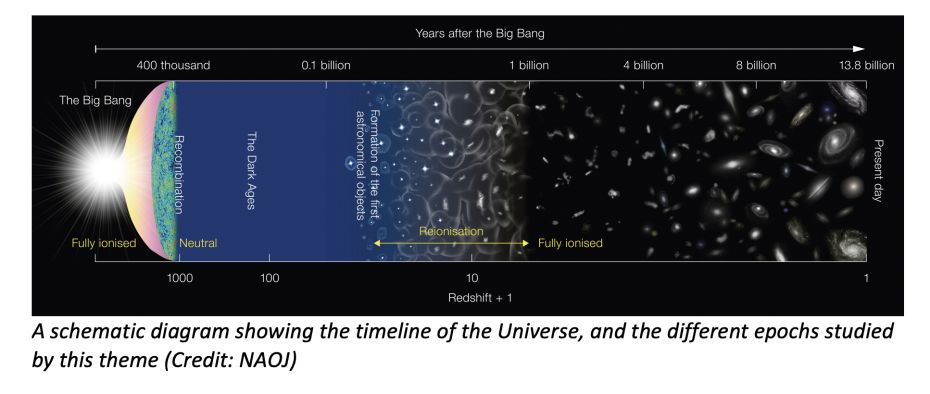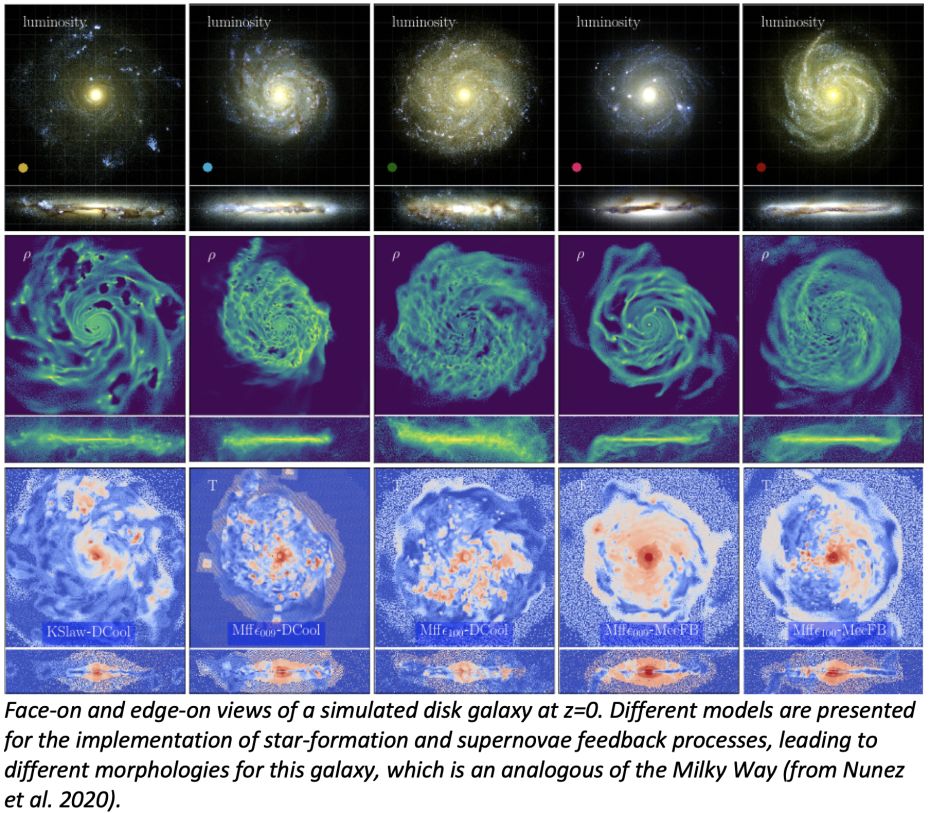Our scientific activities focus on three mutually interdependent themes: 1) illuminating the origin of cosmic acceleration (dark energy) and the physics of the large-scale structure of the universe (dark matter, DM), 2) testing cosmological models and constraining their fundamental parameters, and 3) understanding the processes of galaxy formation and evolution in a cosmological context.We pursue these objectives through the exchange of cross-expertise in our three laboratories (CPT, CPPM and LAM), through shared access to the main observation facilities, and through cooperation in the planning, construction and exploitation of innovative instruments and legacy studies in the framework of major international collaborations.
We explore the nature of the dark energy and dark matter phenomena and investigate the physics governing the growth of cosmic structures with a multi-disciplinary approach, ranging from fundamental theory to large observational programs (e.g. DESI, Euclid, LSST, PFS, and LISA). Our interests center in constraining the parameters of the cosmological models, developing new cosmological testing schemes, and extracting information from multiple cosmic probes. These include the cosmic microwave background, the supernovae Ia standard candles, the spatial distribution of galaxies via both their weak lensing and clustering properties, and the abundance and distribution of clusters of galaxies and cosmic voids. From the theoretical side, we are interested in working out the theoretical predictions of the standard model, in developing beyond general relativity models of gravity, in exploring eventual links between the dark matter, dark energy and inflationary scenarios, and exploring the cosmological potential of gravitational waves.
Keeping in mind that the properties of galaxies are directly linked to cosmology, such as the distribution in Large Scale Structure, masses, sizes, DM content and morphology, several important studies are conducted by our teams to understand the processes of galaxy formation and evolution. Baryonic physics directly affects the properties of galaxies as we can observe them, from nearby observations allowing to study galaxies in great details, to cosmological surveys providing a statistical description of their properties at an earlier age. The originality of the approach adopted by our teams is to bring together the combined expertise on the physics of galaxy evolution through multi-wavelength observations and modeling on the one hand, and the analysis of large cosmological surveys of galaxies on the other hand. An important effort is dedicated to the study of the first galaxies formed in the universe and their impact on the reionization process. To achieve these goals successfully, an important effort is dedicated to the development of innovative instrumentation for the largest facilities available on ground-based and space observatories.
List of the main missions and large observational programs associated to this theme (alphabetic order), with a substantial contribution from our laboratories:
- DESI (Dark Energy Spectroscopic Instrument)
- ELT (Extremely Large Telescope)/Harmoni/Mosaic
- Euclid
- LISA (Laser Interferometer Space Antenna)
- LiteBIRD (Lite satellite for the studies of the B-mode polarization and Inflation from the cosmic background Radiation Detection)
- LSST (The Legacy Survey of Space and Time at Vera C. Rubin Observatory)
- MSE (The MaunaKea Spectroscopic Explorer)
- PFS(Subaru Prime Focus Spectrograph)
- SVOM (Space-based multi-band astronomical Variable Objects Monitor)
- THESEUS (Transient High-Energy Sky and Early Universe Surveyor)
- WFIRST/ Nancy Grace Roman Space Telescope



